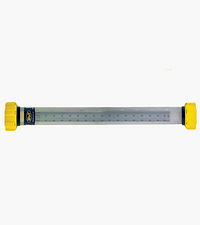Military/NATO
The military and defense sector, particularly within NATO, is a critical component of global security, encompassing operations related to national defense, intelligence, logistics, and strategic deterrence. This sector involves a range of activities, including combat operations, base security, logistics and supply chain management, aerospace and naval operations, and defense technology development. Given the nature of military activities, maintaining operational readiness while ensuring the safety of personnel and equipment is of paramount importance.
KEY AREAS OF THE MILITARY/NATO SECTOR INCLUDE:
- Combat Operations: Military forces engage in land, air, and naval operations to defend national interests, deter threats, and maintain peace. These operations require the deployment of personnel and equipment in high-risk environments, often under extreme conditions.
- Base and Facility Security: Military installations, bases, and forward operating positions require robust security measures to protect personnel, equipment, and classified materials from threats such as sabotage, espionage, and terrorist attacks.
- Logistics and Supply Chain Management: Military operations depend on an extensive supply network for the distribution of fuel, ammunition, rations, medical supplies, and other essential materials. Secure and efficient logistics are crucial for sustaining military readiness and operational effectiveness.
- Aerospace and Naval Operations: Air force and naval units conduct strategic operations, reconnaissance, surveillance, and rapid deployment missions. Aircraft carriers, submarines, and advanced fighter jets play a key role in maintaining aerial and maritime superiority.
- Defense Technology and Cybersecurity: Military forces leverage advanced technologies, including cyber warfare capabilities, artificial intelligence, unmanned systems, and encrypted communication networks, to enhance combat effectiveness and national security.
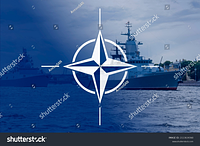
Various strategic approaches, including advanced surveillance, cyber warfare, precision missile systems, and tactical ground operations, are employed to maintain defense superiority and operational effectiveness.
THE THREAT OF EXPLOSION IN MILITARY OPERATIONS
The military sector operates in environments where the risk of explosions is a significant concern due to the presence of munitions, fuel, and volatile materials. Strict safety protocols, including the use of NATO-certified explosion-proof equipment, are essential in mitigating these risks. Some critical areas with explosion hazards include:
- Ammunition Depots and Ordnance Storage: Military bases store large quantities of munitions, explosives, and weapon systems. Improper handling, accidental detonations, or enemy attacks can lead to catastrophic explosions.
- Armored Vehicles and Tanks: These vehicles often carry explosive ordnance and fuel reserves, making them susceptible to blasts from enemy fire, improvised explosive devices (IEDs), or accidents during refueling and maintenance.
- Naval Vessels and Submarines: Warships, aircraft carriers, and submarines operate with explosive weaponry, fuel storage, and propulsion systems. Accidents involving missile systems, torpedo chambers, or reactor malfunctions can result in severe explosions.
- Military Airfields and Hangars: Aircraft fuel storage, missile loading operations, and maintenance activities pose explosion risks, particularly when dealing with jet fuel, high-explosive ordnance, and pressurized systems.
- Forward Operating Bases (FOBs): These temporary military installations, often in conflict zones, face risks from enemy attacks, fuel storage mishaps, and accidental detonations of deployed munitions.
- Missile Launch Sites and Artillery Positions: High-powered missile systems and artillery units operate under extreme conditions. Malfunctions or enemy counterstrikes can trigger explosions, causing severe damage.
- Fuel Supply and Refueling Stations: Military logistics require vast amounts of fuel for aircraft, vehicles, and naval fleets. Improper handling, leaks, or enemy strikes can ignite large-scale explosions.
- Chemical and Biological Weapons Facilities: Although heavily regulated, storage and research sites for chemical and biological defense systems require stringent safety protocols to prevent hazardous explosions or containment breaches.
- Cybersecurity and Electronic Warfare Centers: While not a direct explosion threat, cyber warfare can target control systems of missile defenses, airbases, or naval vessels, potentially leading to critical system failures and unintentional detonations.
Ensuring safety in the military sector demands strict adherence to NATO regulations, advanced protective equipment, and regular maintenance of explosive-sensitive infrastructure. The use of ATEX, IECEx, UKEX-certified explosion-proof equipment, along with frequent safety drills and real-time threat monitoring, is essential in preventing accidents and safeguarding personnel and assets.
The military and NATO forces must continue prioritizing risk mitigation strategies, investment in cutting-edge safety technology, and comprehensive training to enhance operational safety and efficiency in all defense-related activities.
XT-70MOD RECHARGEABLE HANDLAMP NSN: 6230-99-4473141
The XT Rechargeable LED Handlamp uses the latest and most advanced technology to deliver excellent performance, robustness, reliability and versatility in the harshest environments and is CE marked to the ATEX directive and IECEx certified, for safe use in Zones 1 and 2 potentially explosive gas and Zones 21 and 22 dust atmospheres. A Zone 0 version is available. Find out more information here.

HT-650 ZONE 0 HEADTORCH NSN: 6230-99-2262040
The ATEX LED HT-650 Zone 0 Headtorch is the ideal high light output and long duration headtorch for hands free lighting, particularly where access is difficult, requiring climbing or crawling and is CE marked to the ATEX directive and IECEx certified for safe use in Zones 0, 1 and 2 potentially explosive gas and Zones 21 and 22 dust atmospheres. Find out more here.
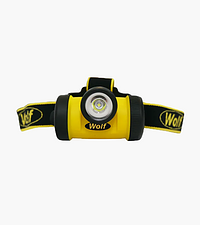
TR-35+ ATEX TORCH NSN: 6230-99-9816738
The ATEX Safety Torch is a reliable, simple and cost effective portable light and is available with a straight or right-angle body style and Vacuum or Xenon bulbs and is CE marked to the ATEX directive and IECEx certified for safe use in Zones 1 and 2 potentially explosive gas, vapour and mist atmosphere, where a T6 or T4 class permits, and Zones 21 and 22 dust atmospheres, with certified maximum surface temperatures of 65°C or 95°C. Find out more here.

M-60MOD ATEX MINI TORCH NSN: 6230-99-1823546
Wolf Mini and Micro torches are tough, reliable and compact enough to easily store in your pocket. Using the latest LED light source technology, light output is highly impressive. ATEX, IECEx and UKEX certified for safe use in potentially explosive gas, vapour, mist or dust atmospheres where a T4 or T5 temperature class permits, all models are approved to Group I for use in mining applications. Find out more here
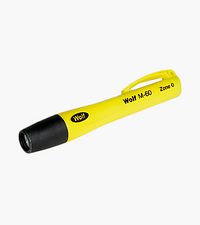
HL-95 HAZARD LAMP NSN: 6120-99-7091078
The HL-95 Hazard Lamp is a semi-portable, free standing illuminated warning device CE marked to the ATEX directive for safe use in Zones 0, 1 or 2 Hazardous Areas. Find out more here.
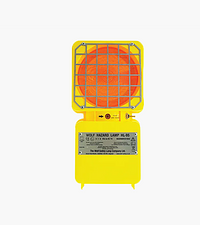
ATEX WORKLITE™ NSN: 6230-99-3688359
The ATEX, IECEx and UKEX certified Worklite™ is a rechargeable, high output LED floodlight for use in harsh, remote applications for extended periods. It offers unique levels of light output, operational duration and robustness in a self-contained battery powered lamp. It is CE marked to the ATEX Directive for safe use in Zones 1, 2, 21 and 22 potentially explosive gas, vapour, mist and dust atmospheres, where a T4 temperature class permits. Find out more here.

ATEX SPLITTER BOX NSN: 6230-99-4261183
The Wolf ATEX Splitter Box is compact, portable and CE marked to the ATEX Directive for safe use in Zones 1 and 2 potentially explosive gas and Zones 21 and 22 dust* atmospheres, making it ideal for power distribution within hazardous area confined spaces. Find out more here.
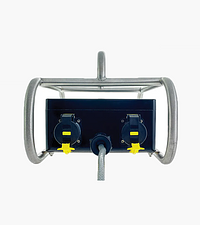
LED TEMPORARY LUMINAIRE NSN: 6240-99-6672990
The LinkEx™ LED Temporary Luminaire is a high powered LED Leadlamp for use in short-term lighting installations and maintenance tasks and is CE marked to the ATEX directive and IECEx certified for safe use in Zones 1 and 2 potentially explosive gas and dust atmospheres, where a T4 temperature class permits. Find out more here.
